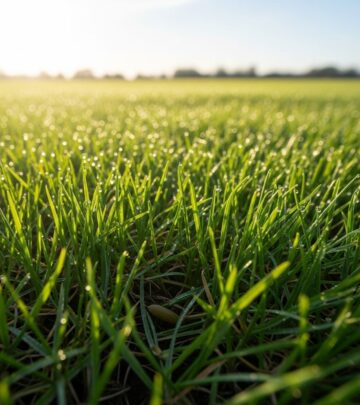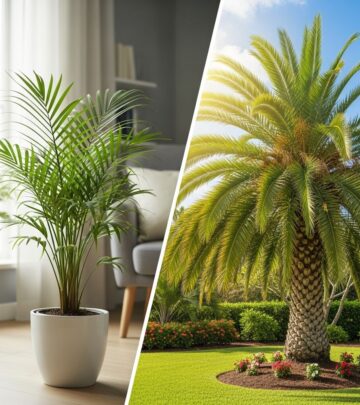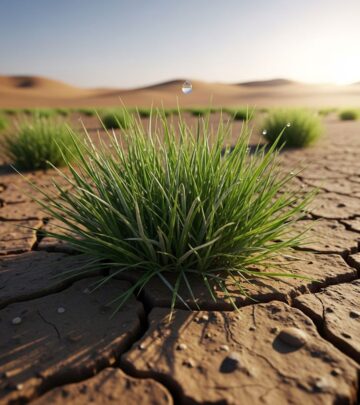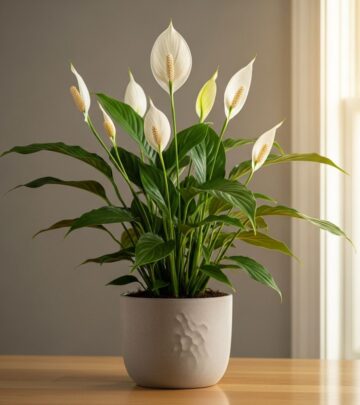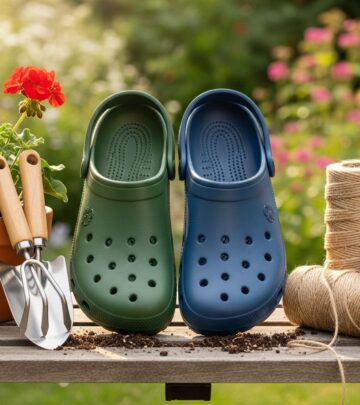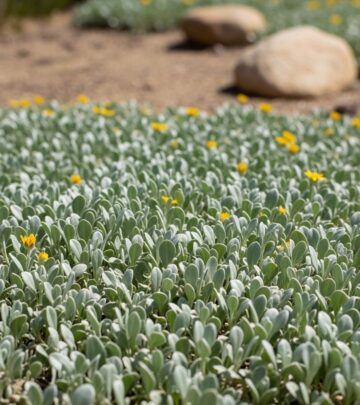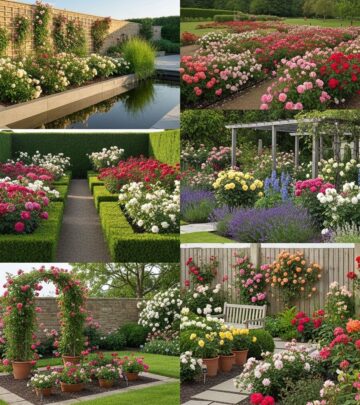Vegetable Garden Design Ideas: Complete Guide To High Yield
Transform your backyard into a productive and beautiful vegetable garden with expert design tips and planting strategies
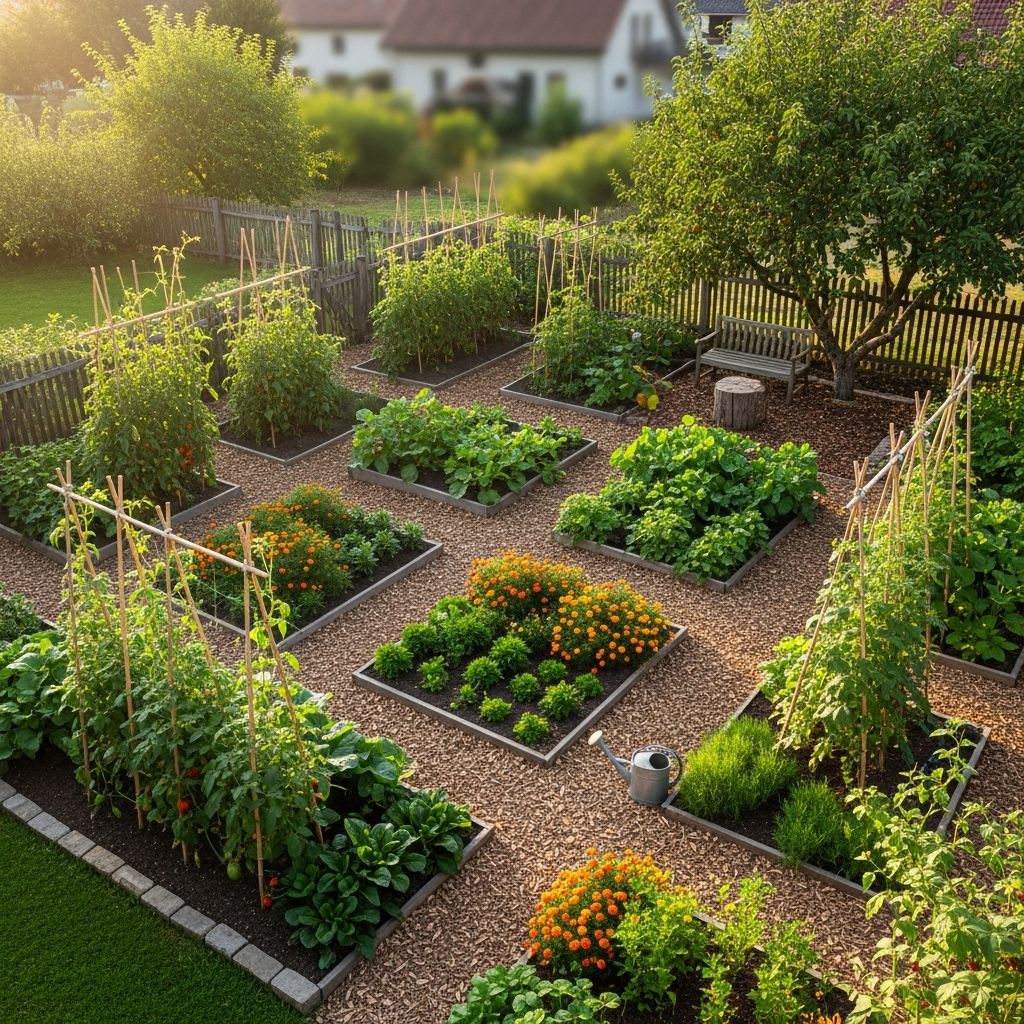
Image: HearthJunction Design Team
Introduction to Vegetable Garden Design
Creating a vegetable garden is one of the most rewarding gardening experiences. Not only does it provide fresh, nutritious produce for your table, but it also offers an opportunity to connect with nature and experience the joy of growing your own food. A well-designed vegetable garden balances functionality with beauty, transforming a simple plot of land into a productive and visually appealing space that enhances your landscape.
Whether you’re a beginner starting your first garden or an experienced gardener looking to refine your approach, thoughtful planning and design are essential for success. The right vegetable garden design considers your unique space, growing conditions, and personal preferences while maximizing productivity and minimizing maintenance.
Planning Your Vegetable Garden
Before breaking ground or purchasing plants, take time to plan your vegetable garden carefully. This initial investment of time will save you countless hours of work later and help ensure a bountiful harvest.
Assessing Your Space
The first step in planning a vegetable garden is to evaluate your available space. Most vegetables need at least 6-8 hours of direct sunlight daily, so identify the sunniest spots in your yard. Observe how sunlight moves across your property throughout the day and different seasons. South-facing areas typically receive the most consistent sunlight in the Northern Hemisphere.
Consider proximity to water sources, as vegetable gardens require regular watering. A location near your house often makes maintenance more convenient and increases the likelihood you’ll notice problems early. Also, evaluate soil drainage by observing how water moves after rainfall—vegetables prefer well-drained soil rather than areas where water pools.
Designing Your Layout
Once you’ve selected your garden location, it’s time to design the layout. Graph paper is invaluable for this step, allowing you to create a scale drawing of your garden space. Measure your garden area and transfer these dimensions to paper, using a ratio like 1 foot = 1 box on the graph paper.
When designing your layout, consider these key factors:
- Allow adequate space between beds for access with tools and wheelbarrows (typically 2-3 feet)
- Position taller plants on the north side to prevent shading shorter plants
- Group plants with similar water and sunlight requirements together
- Include space for support structures like trellises for climbing vegetables
- Plan for crop rotation to maintain soil health and prevent pest buildup
Choosing a Garden Style
Vegetable gardens come in various styles, each with advantages and considerations. The style you choose should reflect your space constraints, aesthetic preferences, and gardening goals.
Traditional Row Gardens
The classic vegetable garden features straight rows with walking paths between them. This approach works well for larger spaces and makes tasks like tilling and harvesting more straightforward. Row gardens are particularly suitable for vegetables that require substantial space, such as corn or pumpkins. However, they typically use space less efficiently than other designs and may require more maintenance for path areas.
Raised Bed Gardens
Raised beds have become increasingly popular for vegetable gardening due to their numerous benefits. These elevated planting areas improve drainage, prevent soil compaction, and warm up earlier in spring for earlier planting. They create clearly defined growing spaces that can be densely planted, maximizing yield per square foot.
When designing raised beds, limit width to 3-4 feet so you can easily reach the center from either side without stepping into the bed. Length can vary based on your space, but 8-10 feet is typically manageable. Consider the materials for your raised beds carefully—untreated cedar, redwood, or composite materials offer durability without introducing chemicals to your garden soil.
Container Gardens
Container gardening is perfect for small spaces like patios, balconies, or areas with poor native soil. Almost any vegetable can grow in containers with proper planning. Choose containers at least 12 inches deep for most vegetables, with adequate drainage holes. Larger vegetables like tomatoes and eggplants need containers of at least 5 gallons, while herbs and leafy greens can thrive in smaller vessels.
Square Foot Gardening
This intensive gardening method divides raised beds into 1-foot squares, with each square planted with a specific number of plants based on their size. This approach maximizes productivity in small spaces and simplifies planning. A typical 4×4 foot raised bed contains 16 planting squares, each dedicated to different crops in precise quantities—for example, one square might contain a single tomato plant, while another holds 16 carrots.
Selecting Vegetables for Your Garden
Choosing which vegetables to grow is perhaps the most exciting part of planning your garden. Focus first on vegetables you and your family enjoy eating, then consider which varieties will perform best in your climate and growing conditions.
Beginner-Friendly Vegetables
If you’re new to vegetable gardening, start with crops known for being relatively easy to grow:
- Leafy greens (lettuce, spinach, kale)
- Radishes
- Bush beans
- Zucchini and summer squash
- Cherry tomatoes
- Herbs like basil, parsley, and chives
These vegetables mature relatively quickly, offering encouragement to new gardeners, and generally face fewer pest and disease problems than more challenging crops.
Planning for Seasonal Harvests
A well-designed vegetable garden provides harvests across multiple seasons. Consider planting a mix of:
- Cool-season crops: These thrive in spring and fall temperatures (35-75°F) and include broccoli, cabbage, carrots, lettuce, peas, and spinach
- Warm-season crops: These require summer heat (65-90°F) and include tomatoes, peppers, eggplant, cucumbers, melons, and squash
By including both types, you can extend your growing season and maintain continuous harvests. In many regions, you can plant cool-season crops in early spring, follow with warm-season crops for summer, then plant another round of cool-season vegetables for fall harvest.
Companion Planting Strategies
Companion planting—growing certain plants near each other for mutual benefit—can improve your garden’s health and productivity. Some classic companion plantings include:
- Tomatoes with basil (improves flavor and repels certain pests)
- Corn, beans, and squash (the traditional “Three Sisters” method)
- Carrots with onions (onion scent confuses carrot flies)
- Cabbage family plants with aromatic herbs like rosemary and sage
Beyond these specific pairings, consider incorporating flowering plants like marigolds, nasturtiums, and calendula throughout your vegetable garden to attract beneficial insects that pollinate crops and prey on garden pests.
Building and Preparing Garden Beds
The foundation of a successful vegetable garden is healthy, fertile soil. Whether you’re working with existing garden beds or creating new ones, proper preparation is essential.
Soil Preparation
Most vegetables prefer loamy soil that balances clay, sand, and silt, with plenty of organic matter. Before planting, test your soil to determine its pH and nutrient levels. Most vegetables prefer a slightly acidic to neutral pH between 6.0 and 7.0.
Amend your soil with compost or well-rotted manure to improve its structure and fertility. For clay soils, add compost, sand, or gypsum to improve drainage. For sandy soils, incorporate plenty of organic material to increase water retention and nutrient levels. Work these amendments into the top 8-12 inches of soil for best results.
Constructing Raised Beds
If you’ve chosen raised bed gardening, proper construction ensures longevity and success. Build beds with these considerations in mind:
- Choose untreated lumber, stone, concrete blocks, or composite materials
- Make beds deep enough for root development (minimum 8-12 inches)
- Ensure drainage by installing beds on pervious surfaces
- Line bottom with hardware cloth if burrowing pests are a problem
- Fill with high-quality soil mix blended specifically for vegetables
A quality raised bed soil mix typically contains equal parts topsoil, compost, and a drainage material like perlite or coarse sand. This creates an ideal growing environment that balances water retention with drainage.
Maintaining Your Vegetable Garden
A successful vegetable garden requires ongoing attention throughout the growing season. Establishing good maintenance routines keeps your garden productive and prevents small problems from becoming major issues.
Watering Techniques
Proper watering is crucial for vegetable growth. Most vegetables need about 1-1.5 inches of water per week, either from rainfall or irrigation. Water deeply rather than frequently to encourage deep root development. Morning watering is ideal as it gives plants time to dry before evening, reducing disease risks.
Consider installing efficient watering systems like drip irrigation or soaker hoses that deliver water directly to soil while keeping foliage dry. These systems conserve water and reduce weed growth compared to overhead sprinklers.
Mulching Benefits
Apply a 2-3 inch layer of mulch around your vegetables to conserve moisture, suppress weeds, moderate soil temperature, and add organic matter as it breaks down. Effective mulching materials include:
- Straw or salt hay (avoid hay, which contains weed seeds)
- Shredded leaves
- Compost
- Chemical-free grass clippings
- Newspaper or cardboard covered with another material
Keep mulch pulled back slightly from plant stems to prevent rot and disease issues.
Seasonal Care
Each season brings different tasks for the vegetable gardener:
- Spring: Prepare beds, start seeds, harden off seedlings, and plant cool-season crops
- Summer: Maintain regular watering, harvest frequently, monitor for pests, and provide support for climbing plants
- Fall: Plant cool-season crops for fall harvest, remove finished plants, and collect seeds
- Winter: Add compost to beds, plan next year’s garden, and order seeds
Keep detailed records of what works well in your garden to refine your approach each year. Many gardeners maintain a journal noting planting dates, varieties, harvest times, and any challenges encountered.
Frequently Asked Questions (FAQs)
Q: How much sun do vegetable gardens need?
A: Most vegetables require at least 6-8 hours of direct sunlight daily. Leafy vegetables like lettuce and spinach can tolerate partial shade, while fruiting vegetables like tomatoes and peppers need full sun to produce well.
Q: When should I start my vegetable garden?
A: Timing depends on your local climate and frost dates. Generally, cool-season crops can be planted 2-4 weeks before your last spring frost, while warm-season crops should wait until after all danger of frost has passed. Fall gardens typically begin in mid to late summer.
Q: How often should I fertilize my vegetable garden?
A: Start with well-amended soil high in organic matter. Heavy feeders like tomatoes and corn benefit from additional fertilization every 3-4 weeks during the growing season. Use balanced organic fertilizers or compost tea for steady, gentle feeding.
Q: How do I control pests organically in my vegetable garden?
A: Practice integrated pest management by encouraging beneficial insects, practicing crop rotation, using physical barriers like row covers, hand-picking larger pests, and using organic deterrents like neem oil or insecticidal soap when necessary. Healthy plants in well-maintained gardens typically resist pest damage better than stressed plants.
Q: Can I grow vegetables in containers if I don’t have garden space?
A: Absolutely! Almost any vegetable can grow in containers with adequate space, proper soil, and drainage. Even small spaces like balconies or patios can produce significant harvests with careful planning and vertical growing techniques.
By following these principles of vegetable garden design and maintenance, you can create a productive, beautiful garden that provides fresh, nutritious food for your table throughout the growing season. Remember that gardening is a continuous learning process—embrace both successes and challenges as opportunities to deepen your connection with the natural world and improve your skills each year.
References
- https://www.almanac.com/vegetable-gardening-for-beginners
- https://www.gardenary.com/blog/complete-guide-to-growing-vegetables-in-a-garden
- https://www.gardendesign.com/vegetables/
- https://bonnieplants.com/blogs/garden-fundamentals/lay-vegetable-garden
- https://lovelygreens.com/how-to-draw-a-simple-garden-plan/
Read full bio of Shinta



